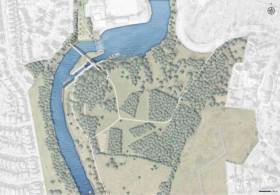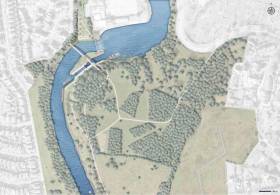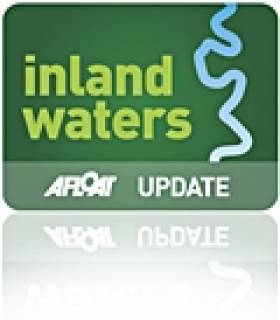Displaying items by tag: Lagan Canal
Nearly five years after work began, the first new boat lock on the Lagan Canal in more than 250 years is set to open tomorrow, Tuesday 17 May.
The new £4+ million Lock Number 1 at Stranmillis is part of a project to reopen the Lagan Canal to navigation from Belfast Lough to Lough Neagh, according to the Belfast Telegraph.
Regeneration of the canal includes a pedestrian and cycle bridge over the lock that was opened last autumn.
At 11am tomorrow morning the first boats since the canal was closed to commercial traffic in the 1950s will pass the lock in a special ceremony hosted by the Lagan branch of the Inland Waterways Association of Ireland with Belfast City Council.
The Belfast Telegraph has more on the story HERE.
Work Begins In Belfast On Lagan Canal Revival
#InlandWaters - Work has begun on the restoration of the Lagan Canal from Belfast to Lough Neagh, according to the Belfast Telegraph.
The £4 million scheme to reopen the 27-mile inland waterway, which dates from the 18th century, provides for the first new boat lock in Belfast for more than 250 years, as previously reported on Afloat.ie.
It’s understood that works on the weir in Stranmills will be completed by next spring, allowing for proper regulation of water flows ahead of the canal’s future reopening to traffic alongside the already popular towpath.
The Belfast Telegraph has more on the story HERE.
Lagan Canal To Get First New Boat Lock In 250 Years
#LaganCanal - Belfast will get its first new boat lock in more than 250 years as work begins on a £4 million project near Belfast Boat Club.
As ITV News reports, the new lock plan — which includes a weir and pedestrian bridge at Stranmills — is part of a proposal to reopen the Lagan Canal to navigation and revive the legacy locks along an inland waterway that’s proven popular with cyclists and walkers.
The Lagan Canal, which once connected Lough Neagh with Belfast Lough, was closed in 1958. Its central section was destroyed by the building of the M1 motorway in the 1960s.
Historic 'Navigation House' To Be New Lagan Canal HQ
#InlandWaters - A dilapidated building on the Lagan Canal that once served as home for the waterway's manager will get a new lease of life as the headquarters of the Lagan Canal Trust.
As the Belfast Telegraph reports, Navigation House, built in 1866 at Lisburn's Union Locks, was sold off in the 1950s and more recently was slated for demolition.
But after a listing by then NI Environment Minister Alex Attwood in 2012, the property was acquired by the National Trust's Hearth Revolving Fund and leased to the Lagan Canal Trust, which has announced plans to once again make it the most important building on the canal.
It's hoped to host an interpretive centre in the house to educate visitors on the history of the canal and its importance to Northern Ireland.
And it may also become a focal point in opening the Lagan Navigation to the wider community through angling, canoeing, walking, cycling and other activities.
The Belfast Telegraph has more on the story HERE.
New Visitor's Guide to Historic Lagan Canal
Lesser Spotted Ulster's Joe Mahon was on hand to launch the first comprehensive free visitor's guide to the inland waterway's Lagan Canal recently, the Ulster Star reports.
The new guide provides information on the canal's storied history and its abundance of wildlife from Belfast to Lough Neagh.
Lagan Canal Restoration Trust manager Cathy Burns said: “For the first time this guide offers visitors details of all there is to see and do along the canal.
"We hope that it encourages many more visitors and local people to take the opportunity to get out and experience the hidden gem that is the Lagan Canal."
A Guide to the Lagan Canal, Past, Present and Future is available to download online at lagancanaltrust.org.


























